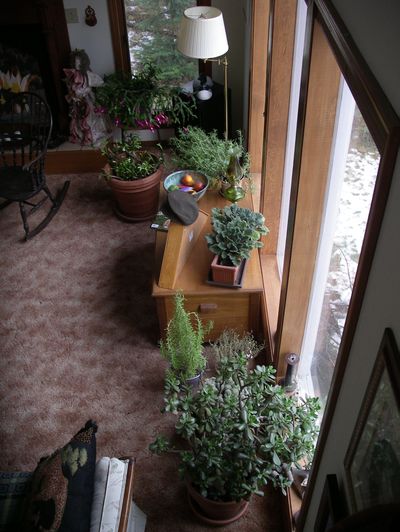Houseplants need different care, feeding during winter months

It’s amazing how a little green color can cheer us up in the winter. Even something as simple as a summer garden scene as a screen saver can completely change our mood. Our houseplant collections can provide the same green therapy through the winter if we treat them right.
Winter is the dormant or resting season for many houseplants, just like it is for our outdoor plants. Because light levels are low, there isn’t enough energy to stimulate growth so they just hang out in their pots. As a result, houseplants don’t need to be lavished with attention this time of year. In fact, it is fairly easy to kill them with kindness.
Overwatering is the biggest issue for houseplants in the winter. Because the plants are resting, they aren’t using as much water. It is pretty easy to drown them. The symptoms of overwatering are dropping and yellowing leaves. Unfortunately, these are the same symptoms for underwatered plants. If that’s not enough to confuse you, different plants need differing amounts of moisture.
Pick up the pot, and if it seems light, it is probably ready to water. To confirm this, insert your index finger to the first joint into the soil (to the second joint for large pots). If the soil is dry to that depth, it’s time to water. Moisture meters shouldn’t be used exclusively as they are often inaccurate. Plants with thick leaves will not need to be watered as often as plants with thin leaves.
Our heating systems can lower humidity enough to cause problems for plants. Place plants away from heater vents for starters. Add humidity by grouping plants together on a tray of gravel and then filling it with water. Be sure the plants aren’t sitting in the water. The water will evaporate and raise the humidity. Misting the plants with a spray bottle or a small room humidifier can also be used to raise the humidity.
Most houseplants need good light through the winter. Plants that are leaning or stretching toward the light need to be moved closer to the window or have supplemental light set over them. This time of year, south- and west-facing windows are perfect for houseplants. The low winter sun is not as intense this time of year and the plants can handle it. Large north-facing windows without shade will also work for most plants. The plants must be within two to three feet of the window as light levels drop quickly the farther away you get. To add extra light, suspend an inexpensive 4-foot-long fluorescent tube fixture with standard bulbs a few inches above the plants and set a timer for about 12-14 hours a day.
Resist feeding or repotting plants until the middle of February, when light levels have begun to rise. They aren’t growing actively so they can’t take advantage of the nutrients or extra room until then. Once new growth begins to appear, begin feeding them with a high-quality fertilizer.